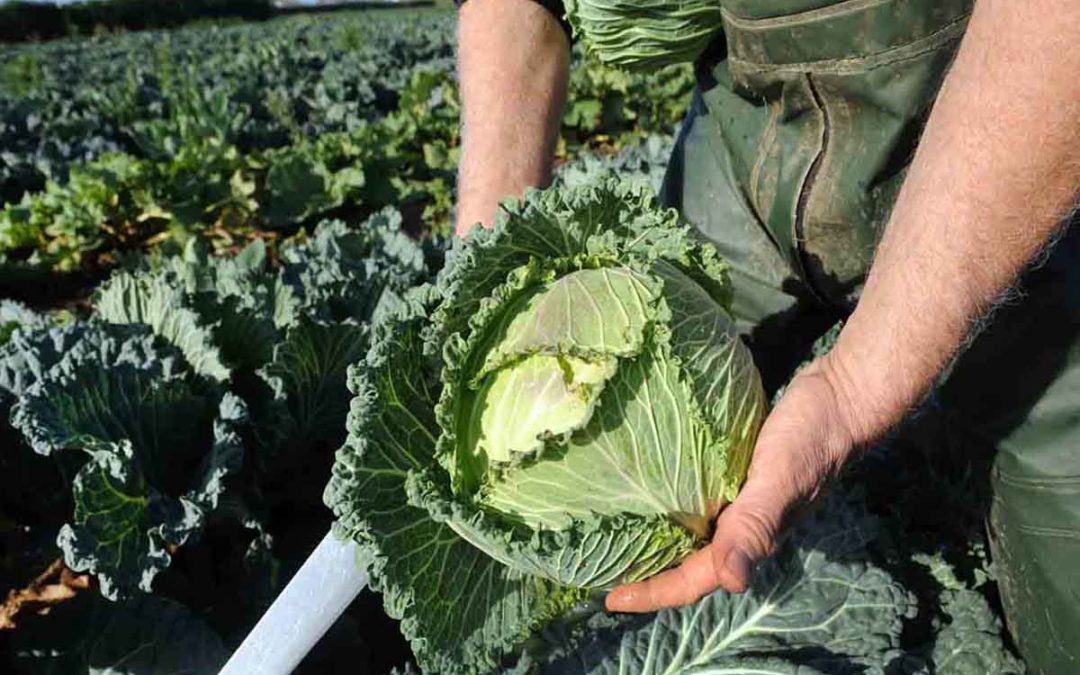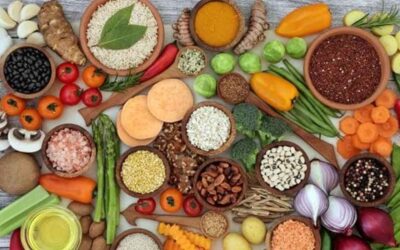health-tips
Benefits of the cabbage leaves for the gout
By Forever Sr. Writer

2020-01-15
Cabbage leaves benefits for gout
Cabbage is the second most consumed vegetable in the world. The only vegetable consumed much more than cabbage is the potato. This denotes the popularity of food in various parts of the world. Be it a salad, dietary preparations, packaged food or any other form, cabbage is consumed for its nutritious volume. Available in colors like green, red and purple, cabbage was first introduced to America in 1536 by Jacques Cartier, a French navigator. Did you also know that cabbage is also the national food of the country with the largest land area in the world, Russia? And adding to amazement is the fact that cabbage has more vitamin C content than an average orange serving.
So, why are we discussing so much about this vegetable here? It’s simply because it has lots of benefits for humans. Be it regulating blood pressure, improving skin conditions, countering inflammations or preventing swollen feet, cabbage has plenty of benefits. And today, we shall discuss its benefits for reducing gout.
Nutritious value of cabbage

Red cabbage has much more vitamin C than the green version. It also consists of vitamins K, B6, and C. It is even loaded with iron, manganese, and potassium. A cup of cabbage can stock your body with 90% of daily intake allowed of vitamin K. This helps our body fight against diseases and bacteria. Vitamin K also increases our immune system power which further aids in defense against sickness and common syndromes. Being a part of the cruciferous family, cabbage offers benefits identical to cauliflower, Brussels sprouts, Bok Choy and broccoli. This also means that these can be substituted by cabbage easily.
Cabbage leaves benefits for gout
Cabbage is widely popular for its property to purify our blood. It even removes toxins and helps our body in lowering the levels of uric acid in our blood. Red cabbage, a popular version of the food, contains a flavonoid called cyanidin. Cyanidin is the most plentiful flavonoid in sweets and raw cherries which are not found easily. This means that you can easily get plenty of flavonoids through red cabbage.

Needless to say, cabbage has become an important food in our gout diet. The anthocyanins found in the red cabbage have strong anti-inflammatory properties. Moreover, the rich amount of amino acids in cabbage helps people who are suffering from internal inflammation. For individuals who have gout problems, cabbage is extremely beneficial. It also helps lower the Glycemic Index (GI). For those who are new to the term, the glycemic index is a value assigned to food. It can be between 0 to 100 and attributed to food where glucose arbitrarily is given the value of 100. The value represents the relative rise in the blood glucose level, a calculated couple of hours after consuming the food.
Cabbage for gut
Cabbage contains soluble fiber that helps lower the GI and hence reduce the onset of gut diseases and other issues such as diabetes. Various gut sufferers have been using cabbage as a topical gout treatment option. This is done by wrapping the cabbage leaves around gout affected joints. The topical remedy of cabbage leaves helps reduce inflammation and swelling of the joints which are a result of gout.
Out of various methods where topical cabbage is useful, one idea is to apply frozen cabbage leaves on the joint inflamed as a result of gout symptoms. Cabbage leaves have enzymes that help us get rid of the crystals nestled around the joint areas of our bones.
So should you include cabbage in your diet?

Gout health can be improved if you eat c abbage. This is a good reason not to just add the vegetable in your diet, but to follow a cabbage-based diet routine as well. The raw form of cabbage has gout healing properties and the way it promotes gout health. Not only cabbage but most of the vegetables from the Brassica family are recognized for gout healing and gout health properties for years. This is due to the modern epidemiologic studies that reveal how frequent consumption of cruciferous vegetables is linked to the lower risk of cancer.
The foods like Brussels sprouts, kale, arugula, bok choy, broccoli, collard greens, turnip, radish, and cauliflower can lower the risk of cancer of digestive tracts, breast, lung, bladder, and prostate.
The main reason why these vegetables work well is due to their properties of altering the composition of our gout microbiome resulting from their frequent consumption.
Isothiocyanates for gout
Cabbage as we already talked about is rich in antioxidants and vitamin C, K and B content. The vegetable is also a rich source of glucosinolates. This compound is a precursor to the Isothiocyanates that is known to exhibit powerful biological functions in fighting various syndromes. It can help us protect against cancer, neurodegenerative diseases, cardiovascular syndromes and gout related complications. Known as a by-product of myrosinase which is a specific plant enzyme, the Isothiocyanates get active as you chew or crush cabbage. It is best taken as consumed raw vegetables or after steaming it lightly.
However, if you cook cabbage, the myrosinase is deactivated. The ingestion of cooked cabbage offers one-tenth of the total amount of Isothiocyanates you get from the raw form. Scientists believe that if you wish to improve your gout healing, it is eminent that you consume cabbage in its raw form to get the good gout benefits. You can go for a mild steaming but should not overheat or cook the food.
Cooked vs. raw cabbage
When you cook any of the cruciferous vegetables and then consume it, the gout bacteria leads to ITC production in our gout. This process speeds up after oral antibiotics. The ITC production and uptake reduces when you eat cooked cabbage. It is also observed that there is a very considerable difference in the ability of humans to product Isothiocyanates. This might be due to differences in the gut microbial community in different individuals.

The ability of the gout community changes over just four days. Studies show how raw cooked cabbage for four days or even longer can change the microbiota composition of our gout. It even led to greater production of Isothiocyanates. In an interesting estimation, a three-day withdrawal from cabbage surprisingly reversed the increased amount of microbial metabolites. This suggests how microbiota does actually require four to five or even more days of cabbage consumption which is reversible.
Some amazing scientific facts about cabbage benefits
- It might suprise you that cabbage is one of the two vegetables that is a mainstay of type 2 diabetes prevention.
-
There are as many as 20 different flavonoids and 15 different types of phenols in the cabbage. All of these show antioxidant activity. The impressive list of antioxidant phytonutrients in the cabbage is the main reason why various there are so many researches going on on this vegetable. Studies also show how cabbage decreases the risk of various cardiovascular diseases.
- Cabbage is the second most economical vegetable as far as the price per edible cup relates. This is further clarified by a report in the Economic Research Service at the USDA (U.S. Department of Agriculture). Potatoes are the only ones above cabbage that are slightly less expensive. The relatively low cost of cabbage in comparison to other vegetables have made this herbal remedy a nutritional growth marvel. Cabbage has shown prominence with 3 excellent, 11 good and 6 very good rankings at the all-time acclaimed WHFoods rating systems.
Some more facts
- Cabbage comes in plenty of varieties from the different parts of the world. But out of all these, the cabbage falling in the red and purple category. The reason for the popularity is the studies and researches that show the higher constituents of antioxidants and the subcategory cyanidins in the cabbage. The anthocyanins in red cabbage are the main reason why this food is able to provide such good gout health results.
-
Our blood levels of lutein and beta-carotene improve if we continuously take red cabbage. Red cabbage also increases out total blood antioxidant levels. Also, the low-density lipoprotein (LDL) in our blood tends to decrease when we consume cabbage on a regular basis. The reduction in oxidized LDL helps eliminate the risk factor and avoids blood vessel issues caused by excessive LDL in the oxidized form.
- Many of us don’t know that cabbage is a good source of sinigrin. This is a cabbage’s sulfur-containing glucosinolates that are highly beneficial in gout related cancer types. The Sinirgin is the form of ally-isothiocyanate in our body. The Isothiocyanate compound has shown various cancer-preventive properties for prostate, bladder and colon cancer.
- Cabbage also has another glucosinolate called glucobrassicin. This compound converts into two types of compounds that can help prevent cancer. The first one is indole-3-carbinol and the second one is diindolylmethane. The latter is an interesting compound that contains sulfur, produced in the stomach. It shows various gout problem preventive properties.
Conclusion
Gout is a common form of the disease that develops by excessive uric acid in our joints. To solve the problem, one might rely on surgery or medications. But the best method is to choose the herbal remedies from the cabbage. The cabbage has abundant nutritional value not just for gout, but our entire body metabolism. Be it its consumption or topical use, cabbage helps definitely to decrease the symptoms of gout. So, start including this leafy vegetable in your diet from today and keep the risks of gout away. Hope our blog helped you with interesting facts. Do let us know your views in the comments section.








excellent article on cabbage. Would fermenting the cabbage enhance those benefits mentioned? just as sauerkraut enhances the gut microbiome.